Hello and welcome!
As I mentioned in my last post, I spent several days last week in Rome and Assisi. I was visiting Assisi because the bishop there, Bishop Domenico Sorrentino, has been inviting me for some time to participate in their local social justice conference and to celebrate a Pentecost Mass at the Church of Santa Maria Maggiore, which is a Capuchin parish and the place where Blessed Carlo Acutis is buried.
I arrived in Rome on Thursday afternoon and met with the new officials of the Pontifical Commission for the Protection of Minors: Secretary Bishop Luis Manuel Ali Herrera and Adjunct Secretary Mrs. Teresa Kettelkamp. We are delighted to have them on board.
They have been in the process of meeting with representatives from the different dicasteries of the Roman Curia, and they reported that it has gone very well.
It was interesting to see that they are getting ready for the Jubilee Year in Rome. The papal altar is all shrouded in scaffolding and tarps, and the Holy Door is sealed.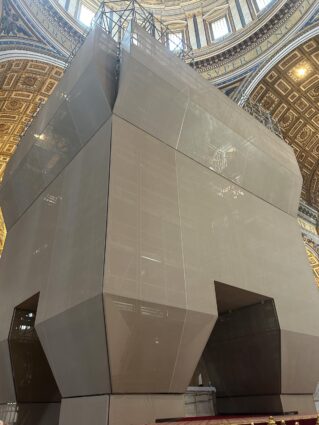
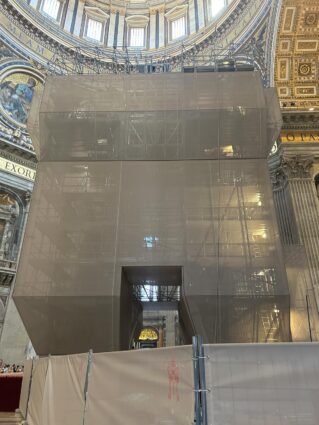
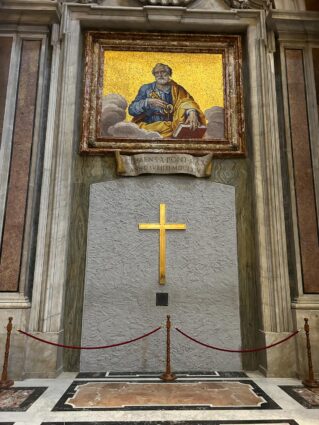
Friday morning, a Capuchin brother from Assisi, Brother Boniface, drove us there.
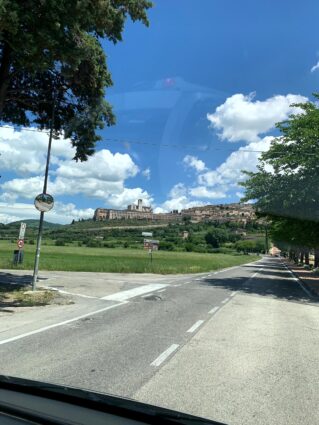
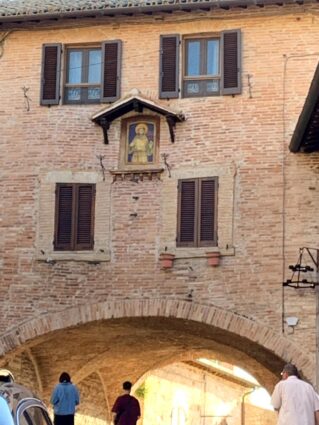
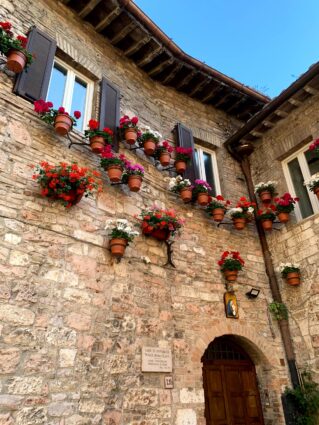
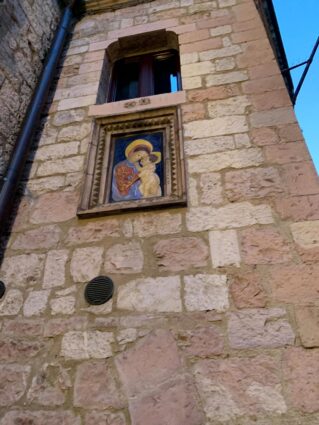
This church in the central square of Assisi church was the Temple of Minerva, which is now a church of the Third Order Regular of St. Francis.
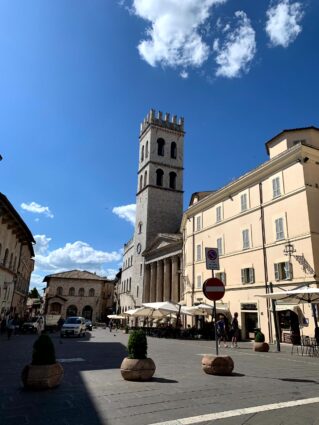
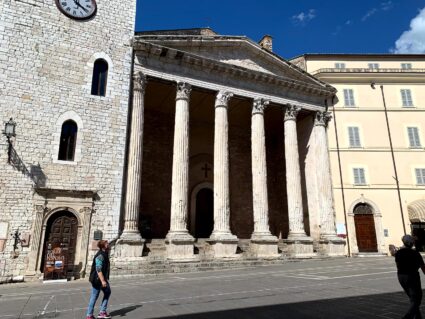
We stayed at the Capuchin monastery there, which is just across the street from the Sacro Convento.
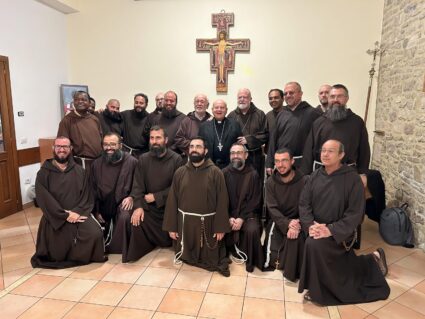
The Sacro Convento is connected to the Basilica of St. Francis and is the original monastery of the first followers of St. Francis and the papal palaces that were built there. The popes used to spend a lot of time in that palace until Napoleon. Apparently, there were so many problems, difficulties and insecurities in Rome that the pope had palaces all over the Papal States, and one of them was in Assisi at the Sacro Convento.
When you look at this view of the basilica, you see the basilica to the right, and to the left are the colonnades, which are the Sacro Convento and the papal apartments.
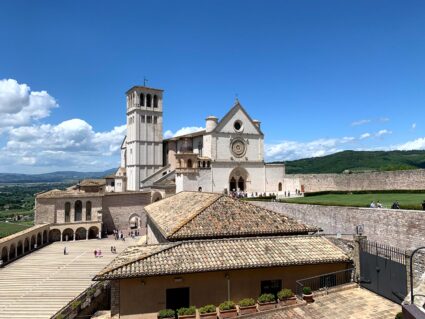
We had a beautiful view from the room I was staying in.
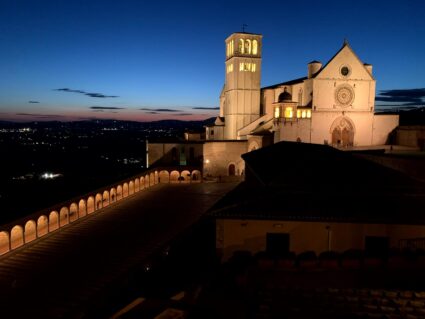
We had Mass at the tomb of St. Francis.
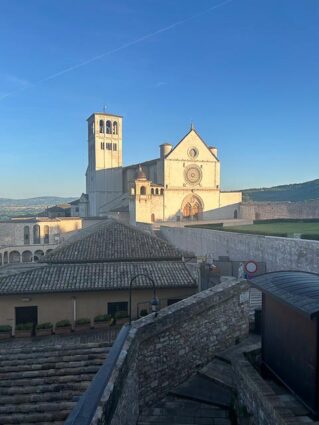
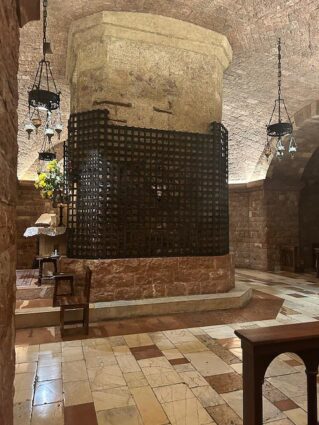
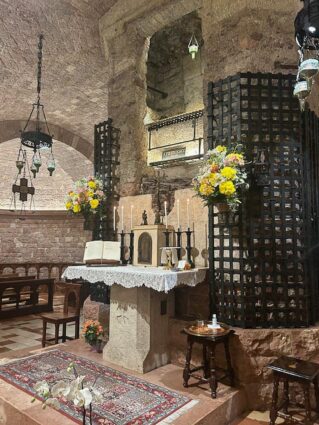
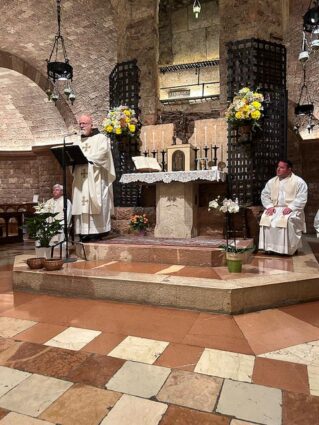
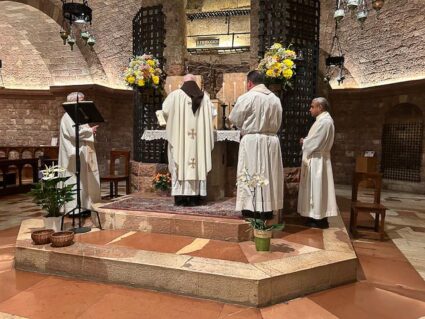
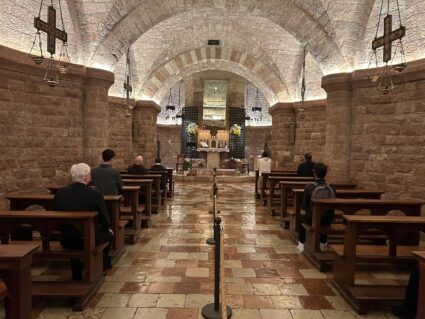
The early followers of Francis are buried around where he is buried. They are all in the lower basilica there at the four corners next to the tomb of St. Francis.
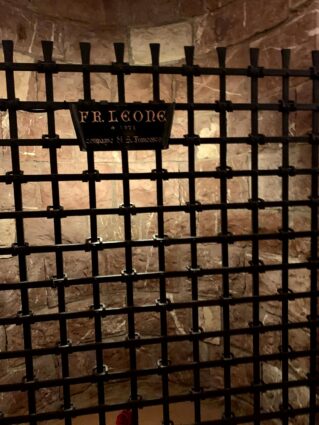
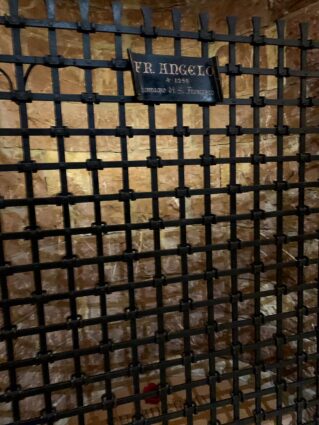
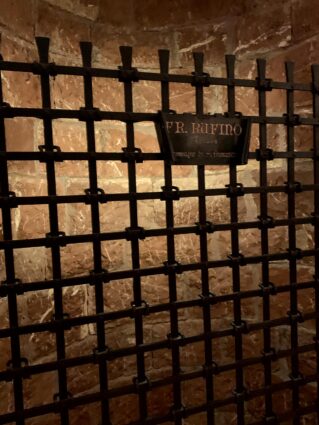
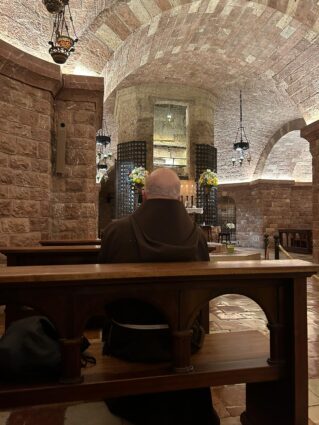
Afterward, the superior of the Sacro Convento invited us for breakfast. Following breakfast, they gave us a tour of the old convent and palace.
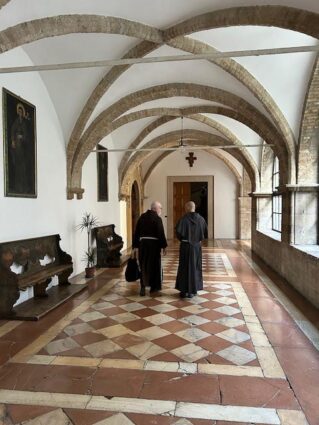
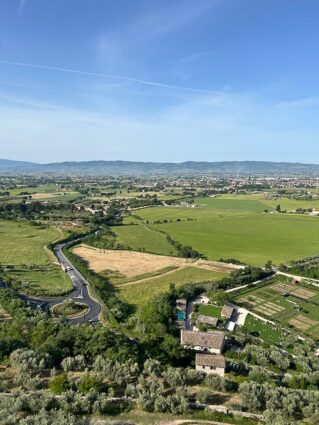
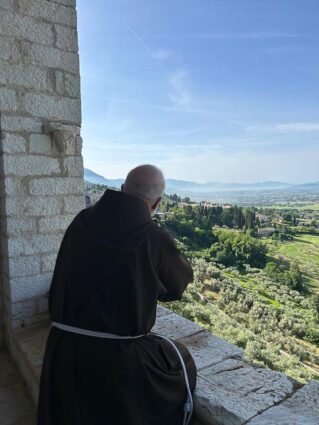
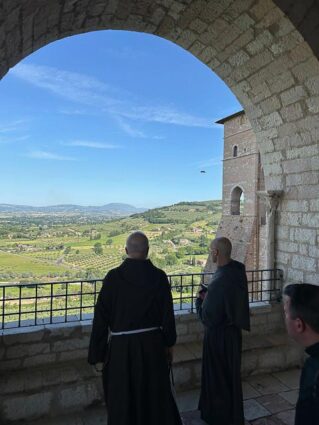
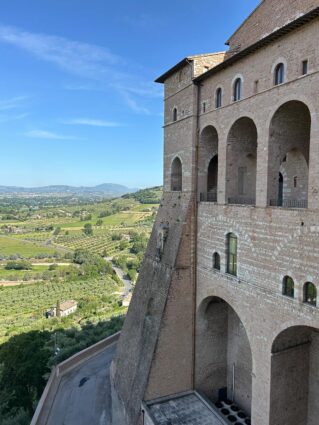
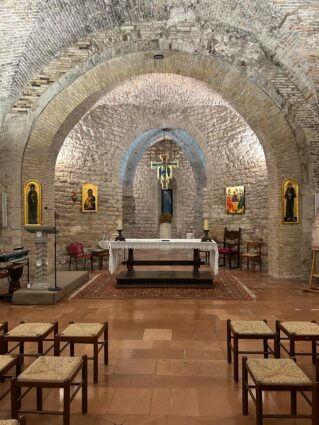
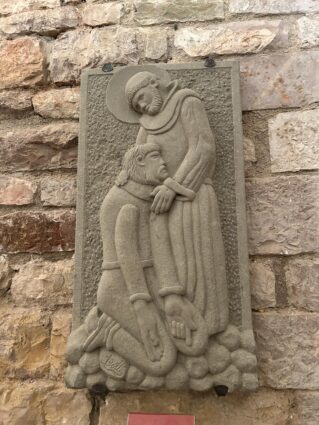
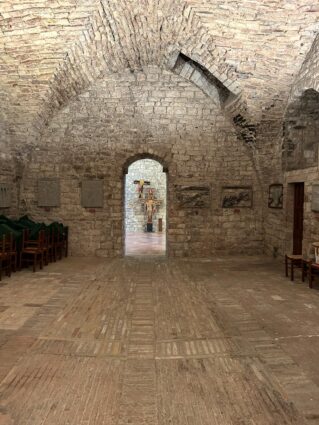
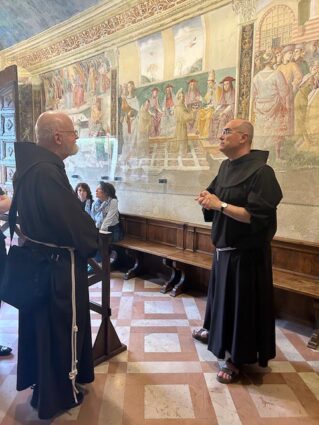
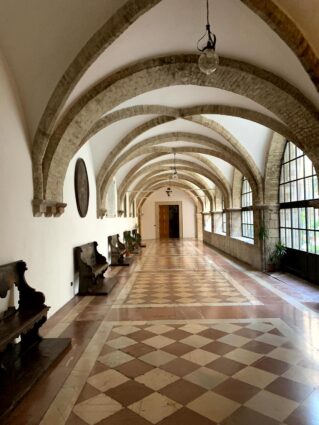
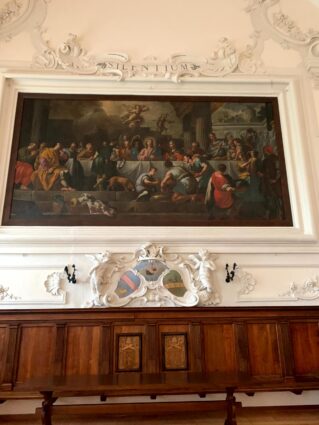
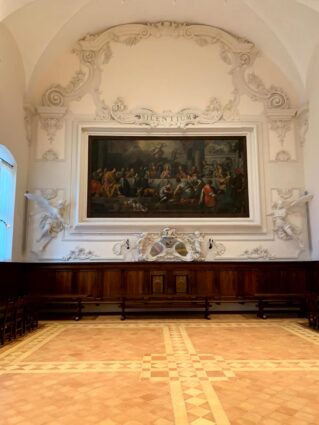
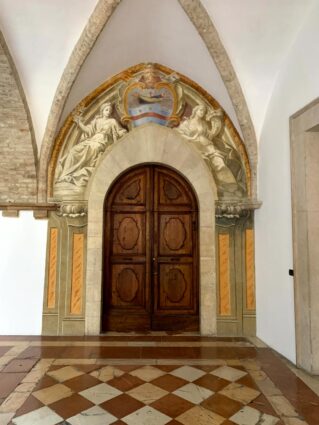
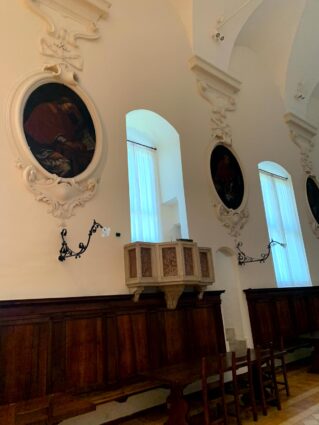
This long white refectory is the papal refectory where the Holy Father, the cardinals and the curia would eat.
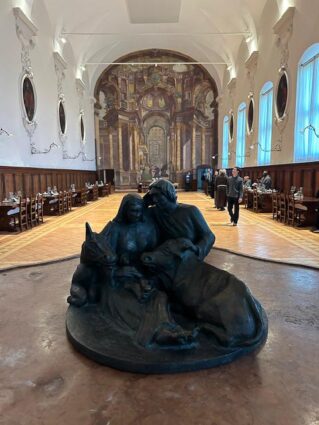
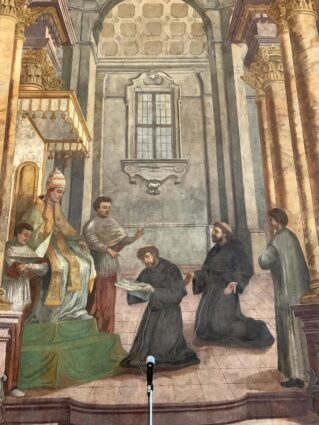
One of the most interesting parts of the tour was finding out there was an underground passage leading from the papal apartments up to the fortress on top of the mountain. It’s a real Dan Brown type of setting!
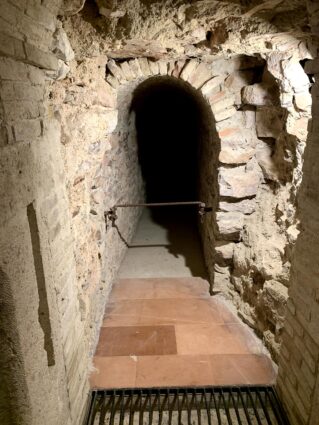
We also visited the Church of San Damiano. This is the convent where St. Clare and the first Poor Clares lived.
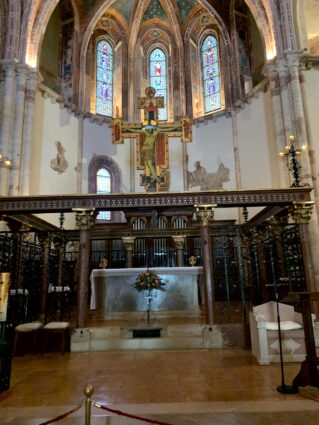
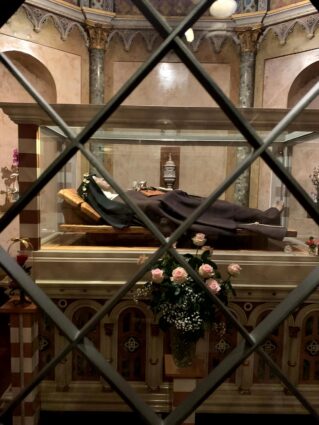
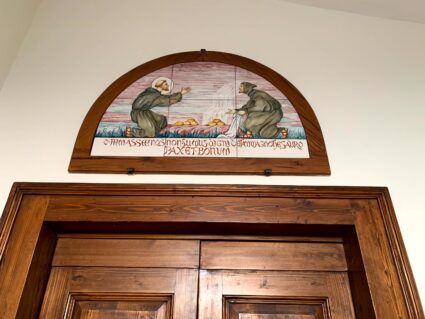
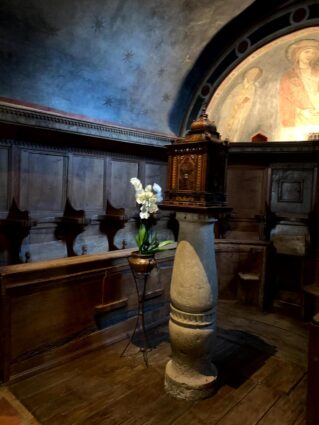
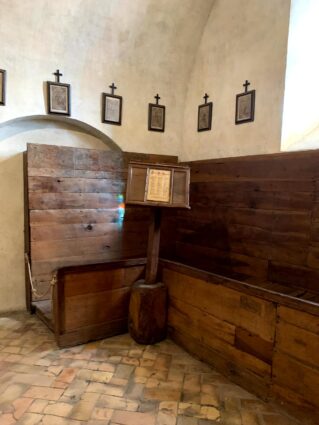
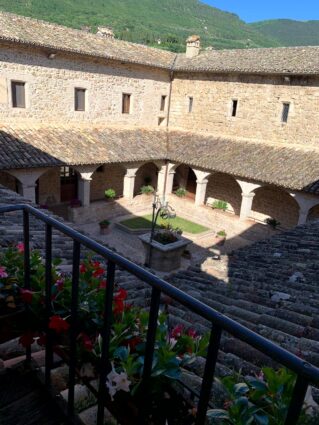
We said Mass in a small chapel there, which is the site where St. Agnes died. St. Agnes was a younger sister of St. Clare and one of her first followers.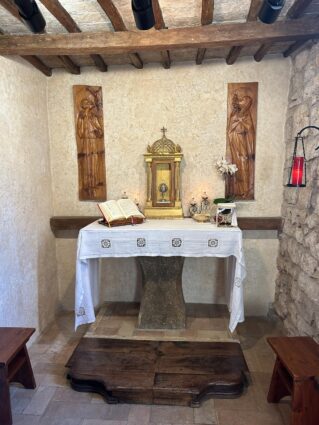
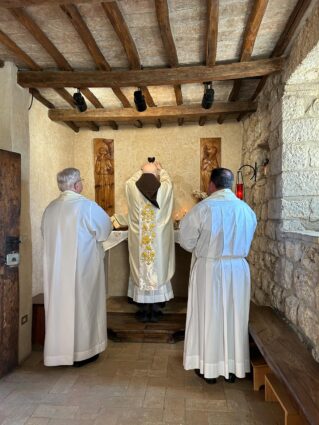
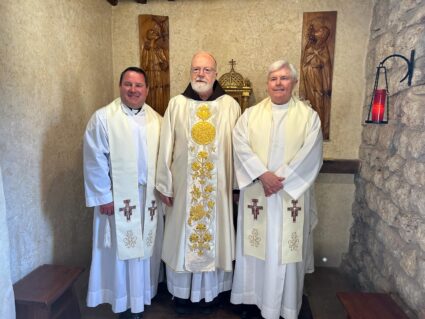
They have a replica of the Santo Cáliz (Holy Chalice) of Valencia, which many consider to be the famed Holy Grail.
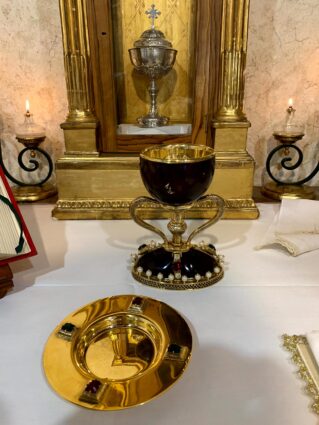
It reminded me of when I was in Valencia in 2006 for the visit of Pope Benedict. I was concelebrating the Mass, and they were using the Santo Cáliz. I was all excited because I thought I was going to be able to receive Communion from it, but boy, did that disappear in a hurry!
In the refectory at San Damiano, they place flowers at the place where St. Clare used to sit.
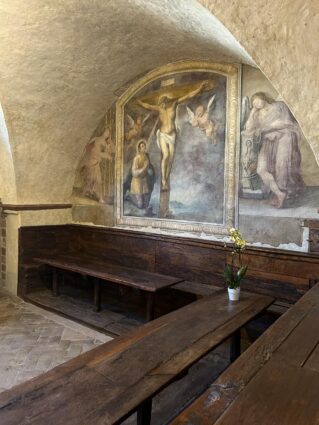
We also visited the original chapel in San Damiano. This is the place where St. Francis heard the crucifix tell him, “Rebuild my Church.”
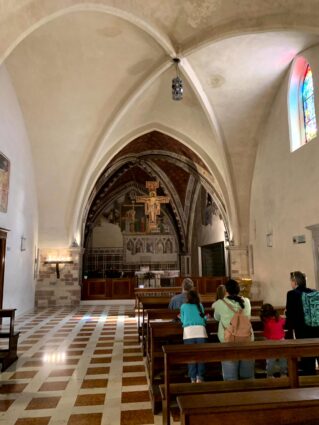
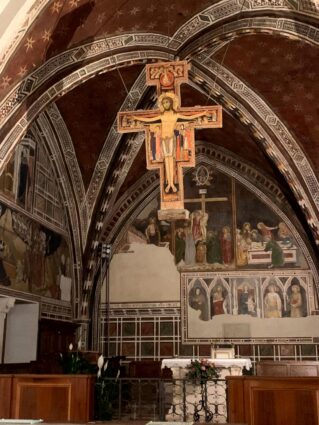
The cross there now, however, is a replica, not the original. The townspeople built the Basilica of St. Clare to bring the nuns inside the walls of the city because being outside the town was too dangerous. (Some will remember the story of the Saracens attacking the convent and St. Clare going out with the monstrance and driving them off.) But, of course, when they moved into the city, the nuns were not about to leave the crucifix behind!
Saturday, we had the social justice conference. Every year, they give a grant to some organization that is involved in social justice ministry. This year, the money went to the Capuchin Friars’ mission in the Amazon. There was one friar from the mission who happened to be there, so he received the award in the name of the mission.
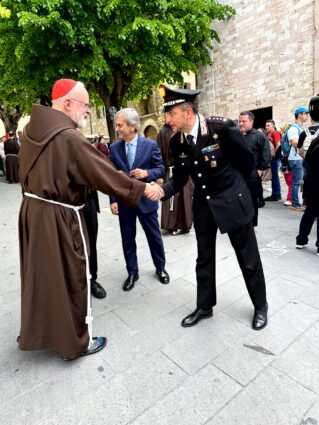
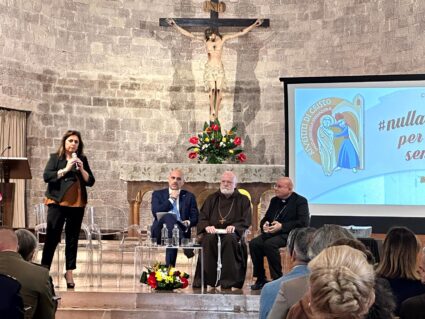
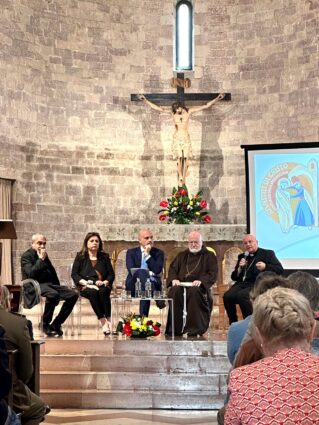
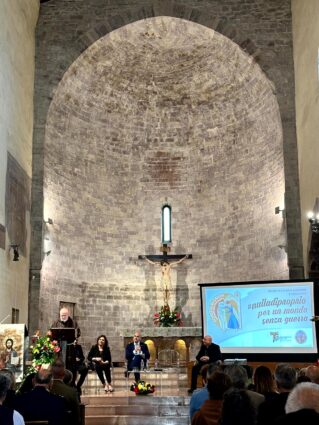
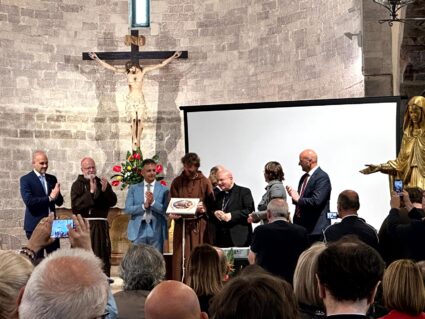
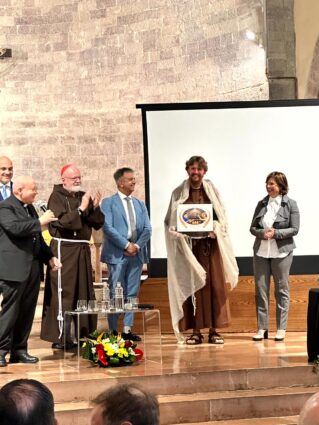
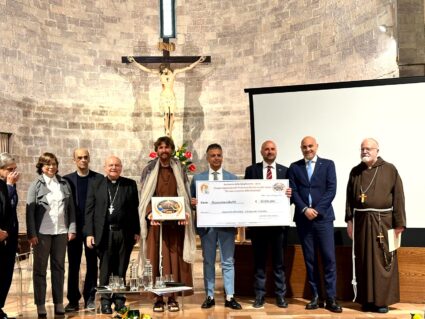
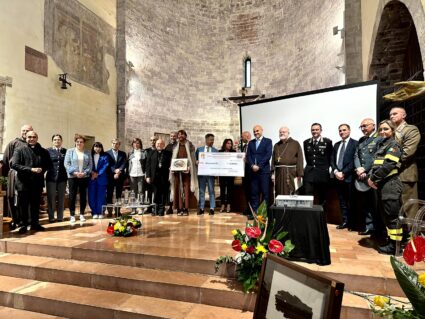
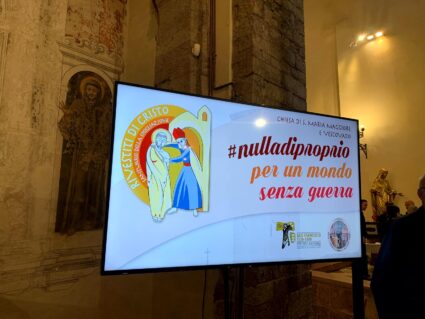
Sunday, we celebrated the Pentecost Mass in the Church of Santa Maria Maggiore.
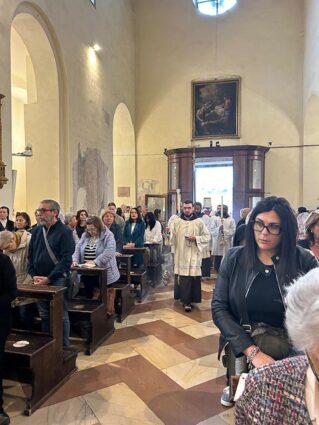
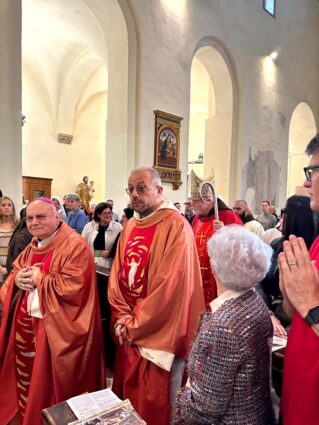
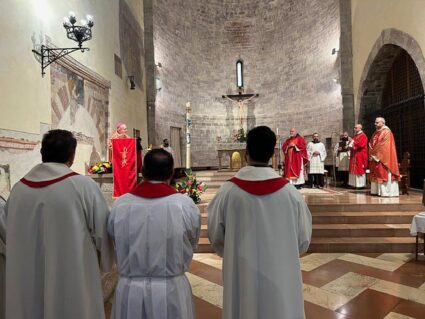
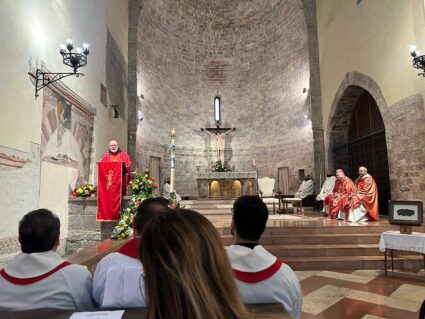
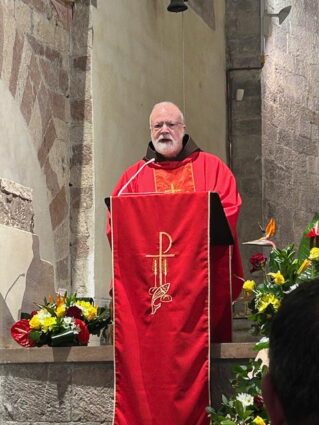
There were a number of government and military officials present for the Mass. We were also very happy to be joined by Msgr. Tony Figueiredo, who had been very helpful in arranging the trip.
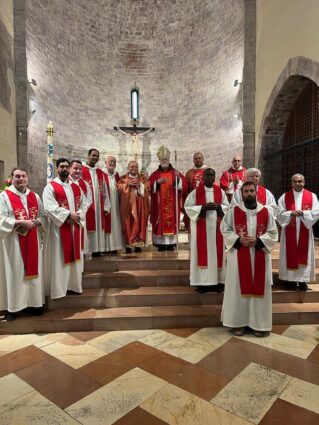
Several years ago, Bishop Sorrentino entrusted this church to the care of the Capuchins. It’s a historic church, but it was never one of the places people would visit when they went to Assisi. It was the original cathedral, and it is very probable that St. Francis was baptized there. However, they took the baptismal font and put it in the new cathedral, San Rufino.
Being the original cathedral, it is right next to the bishop’s palace, where St. Francis took off his clothes during the trial and gave them back to his father in a very dramatic gesture, saying, “From now on, I will no longer say, My Father Pietro Bernadone, but Our Father who art in heaven.” So, it is called il Santuario della Spogliazione (the Sanctuary of the Spoliation).
Then, in 2019, the church became the burial site of Blessed Carlo Acutis, and it has become one of the most popular sites in Assisi. It’s really very moving to see hundreds and hundreds of teenagers lined up to go visit the tomb. Normally, you would expect to see college students and retired people going to Assisi, but now it’s full of all these teens visiting Assisi because of Carlo Acutis. It’s quite impressive.
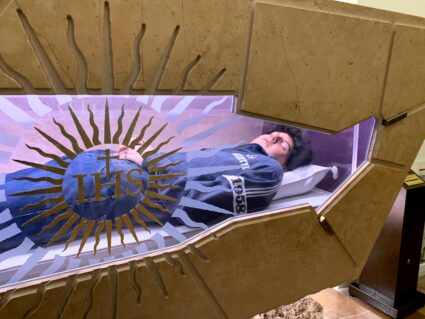
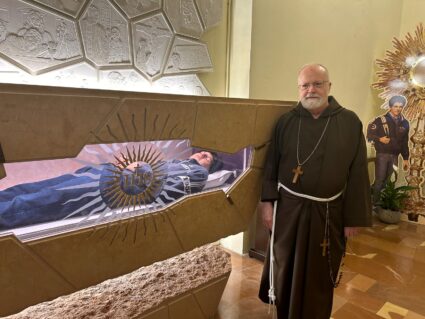
But, of course, the attraction is understandable. When you read his story, to me, it just shows the power of grace in a person’s life because he didn’t come out of a particularly religious family, and yet, right from his earliest childhood, he was so faith-filled and drawn to the sacraments and the Church. Of course, we were so pleased to learn that just days after our visit, the second miracle was approved to pave the way for his canonization.
We also had an opportunity to visit the Basilica di Santa Maria degli Angeli, which contains the Portiuncula, the place where St. Francis died. However, like the papal altar in St. Peter’s Basilica, it’s all under wraps, getting ready for the Jubilee in 2025.
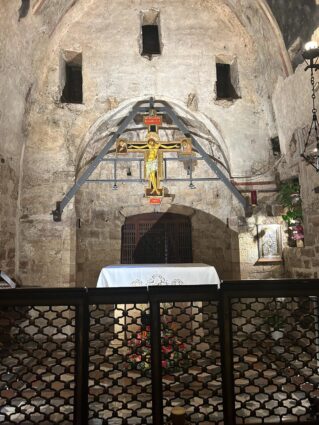
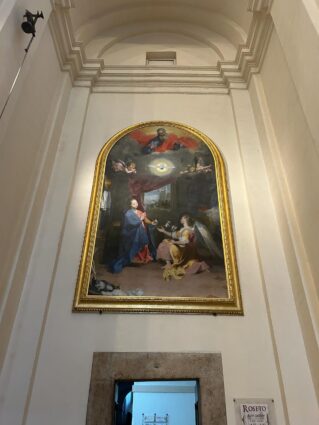
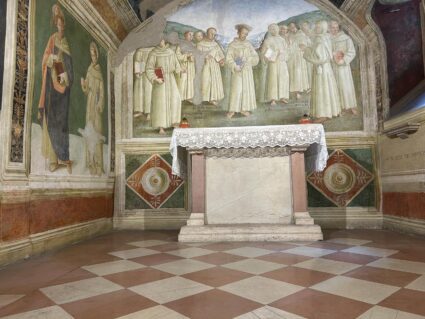
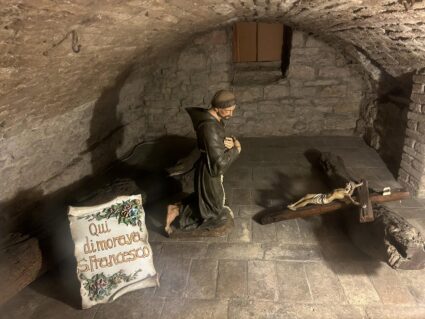
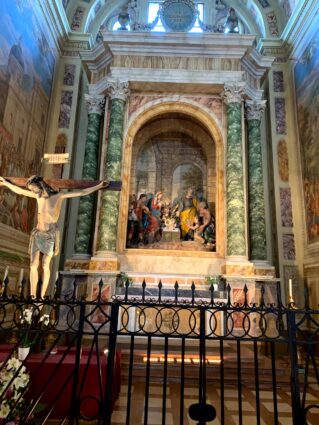
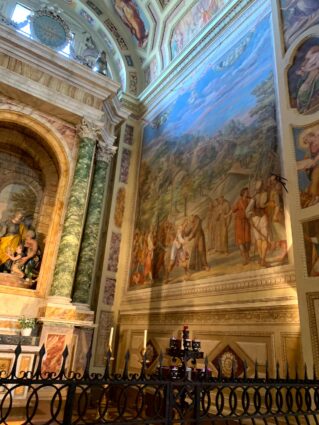
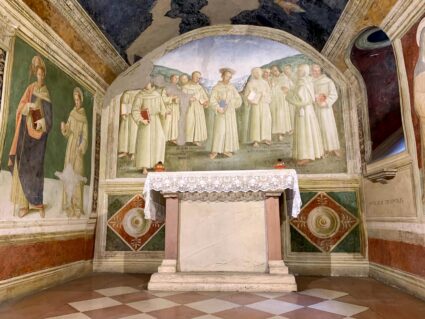
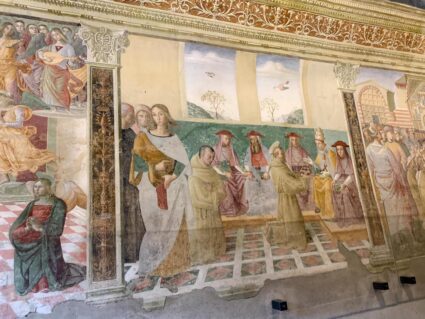
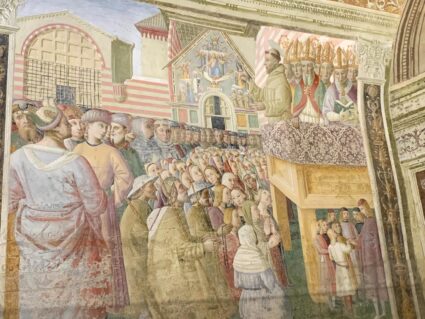
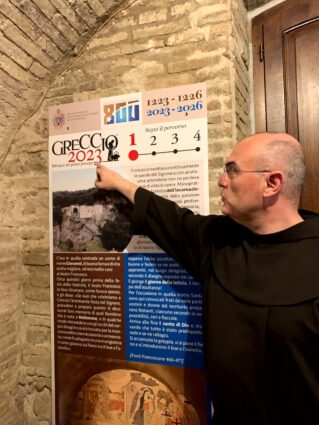
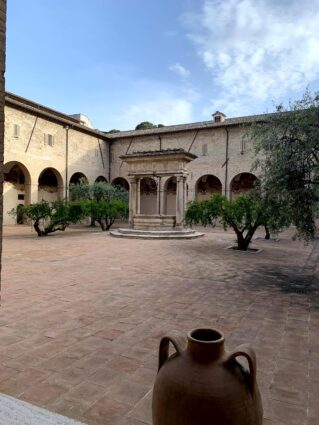
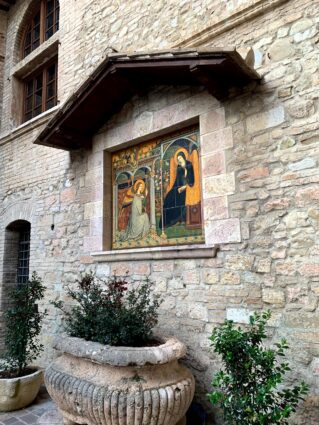
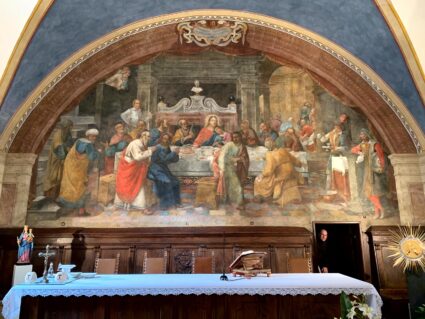
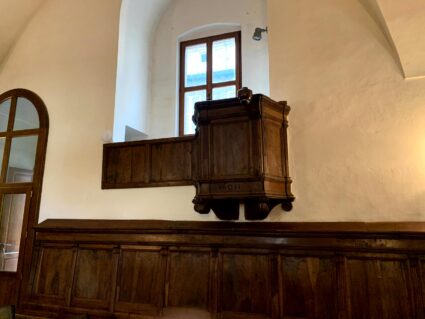
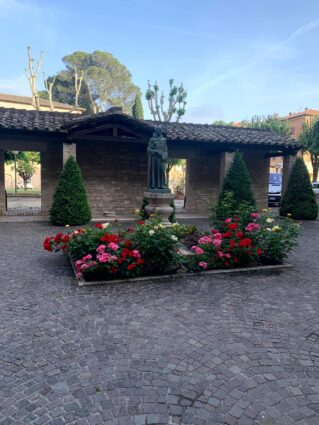
And, of course, many of you know that we have an exact replica of the Portiuncula on the grounds of the Cushing Centers in Hanover, which Cardinal Cushing had built to serve as his final resting place.
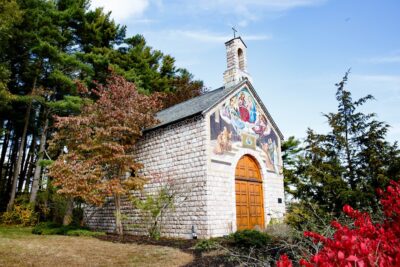
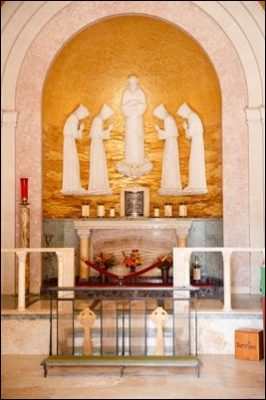
And it really is an exact replica. They went so far as to import the building materials from Assisi and ensured the color of every stone laid matched the corresponding one in the original Portiuncula!
Outside the Portiuncula, there is a peace garden, which is the site of a meeting with Pope Francis and economists from all over the world on building a more just economy.
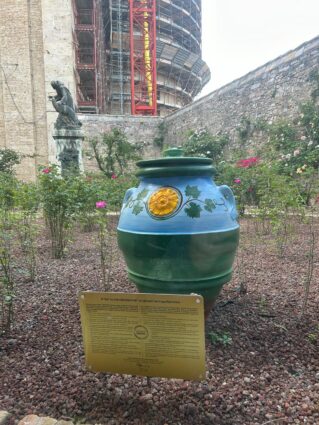
Sunday night, we returned to Rome, and on Monday morning, we had a Mass in the Irish Chapel on the lower level of St. Peter’s Basilica.
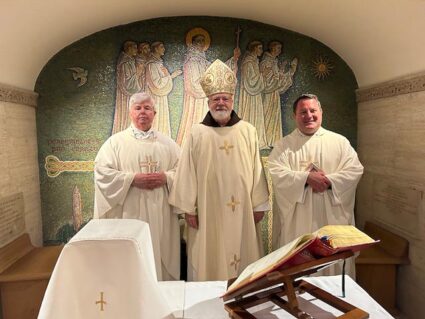
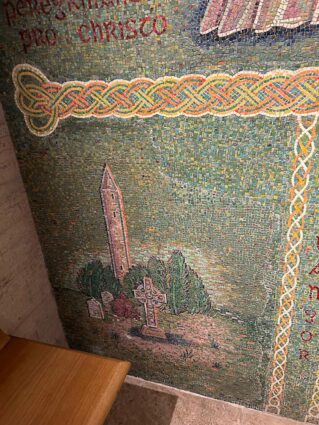
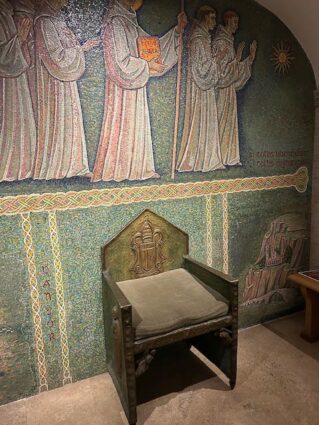
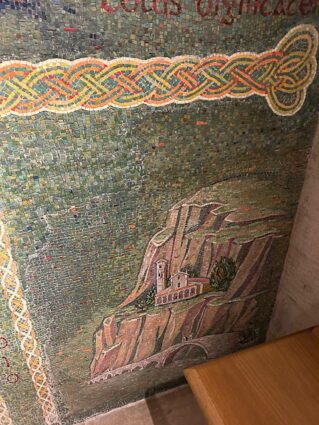
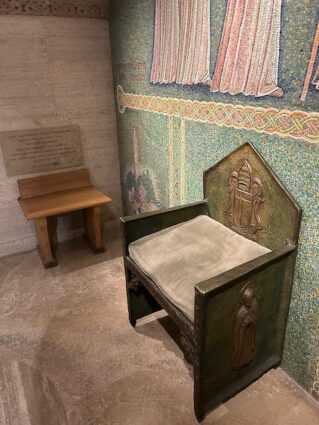
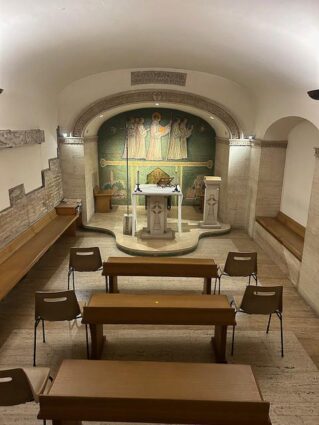
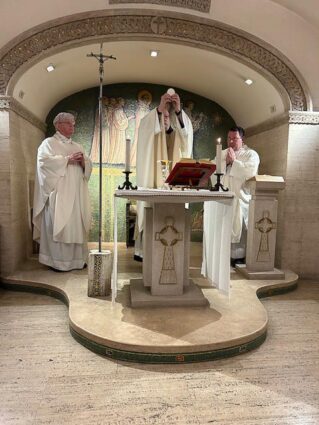
I also visited some of the other altars there and had an opportunity to pray at the tomb of Pope Benedict XVI.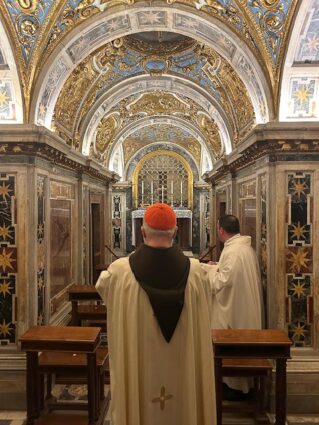
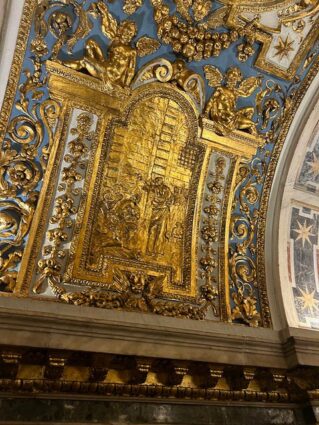
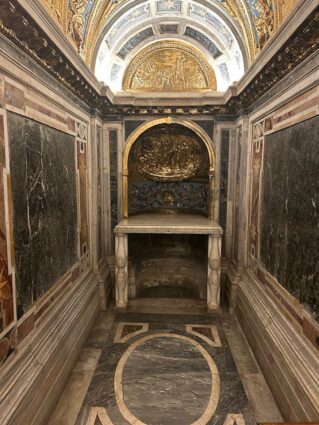
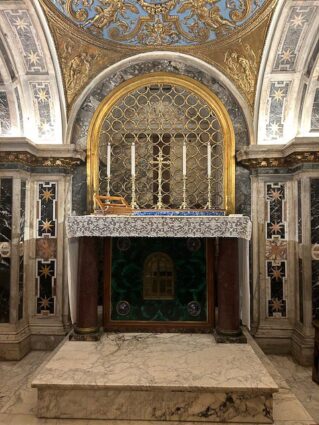
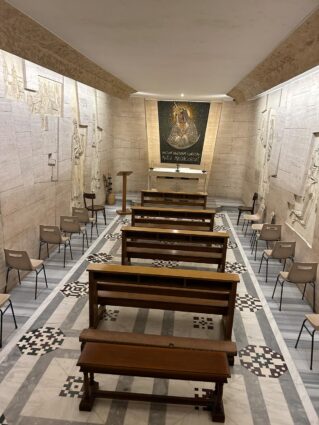
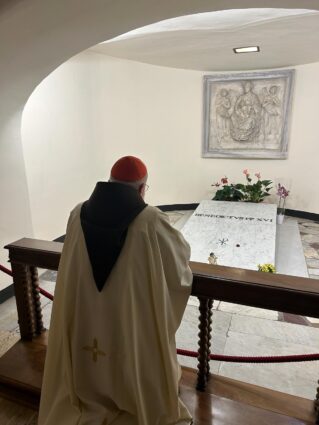
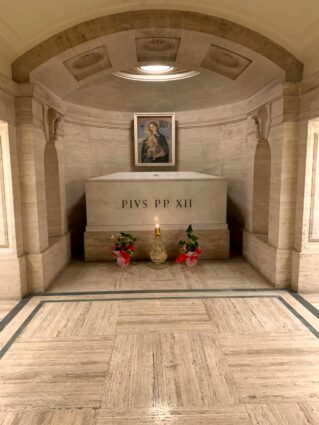
The lower basilica is very interesting because, in certain places, you can see the original basilica built by Emperor Constantine. Of course, the present St. Peter’s Basilica was built during the Renaissance because the old one was in disrepair and too small. But there are still places in the lower basilica where you can see the original pillars and stones from Constantine’s time.
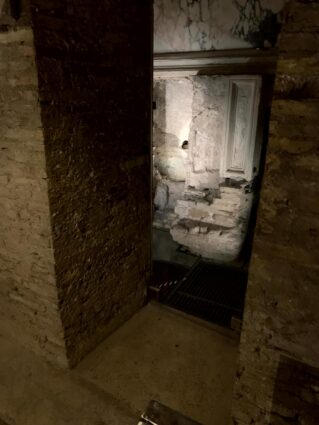
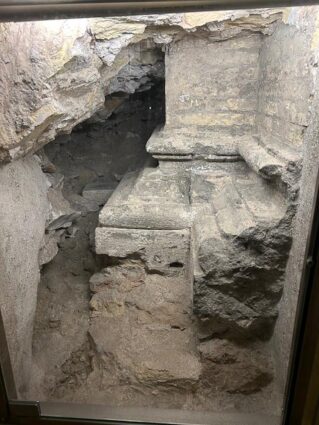
So, as you can see, it was a very short trip, but being in Assisi for those few days was a very uplifting experience, and I want to thank all the Friars — the Conventuals, the Capuchins and the OFMs — who were all so gracious to us.
Until next week,
Cardinal Seán
